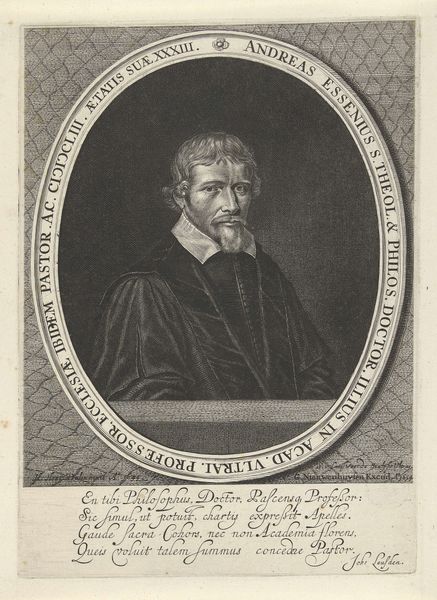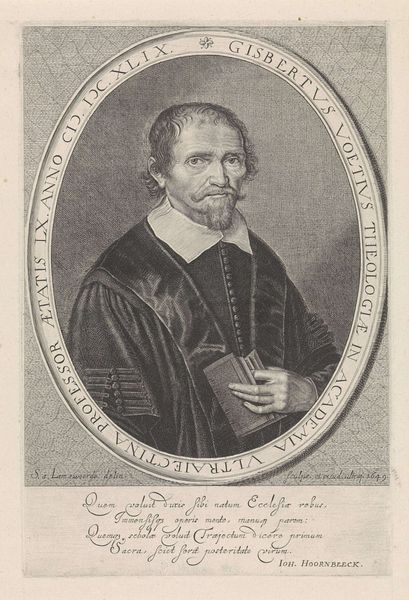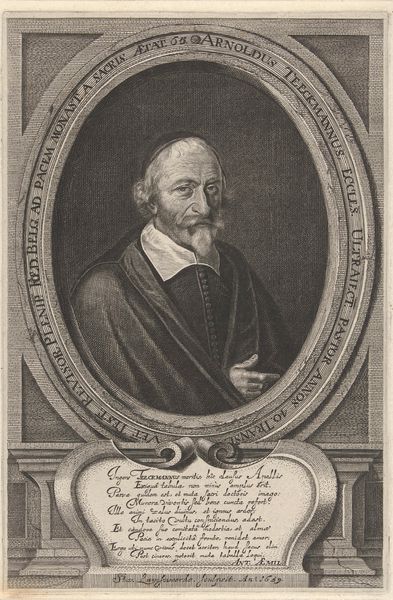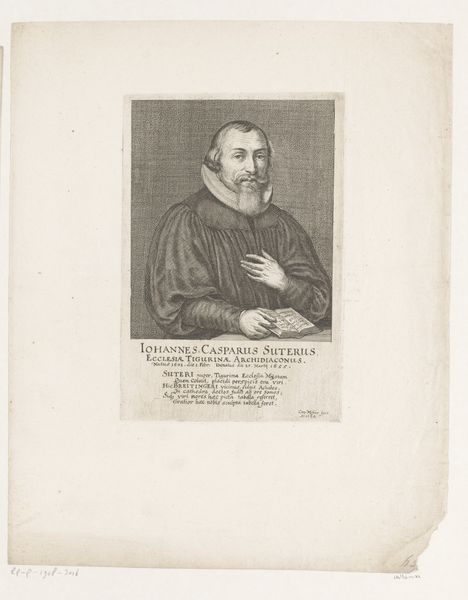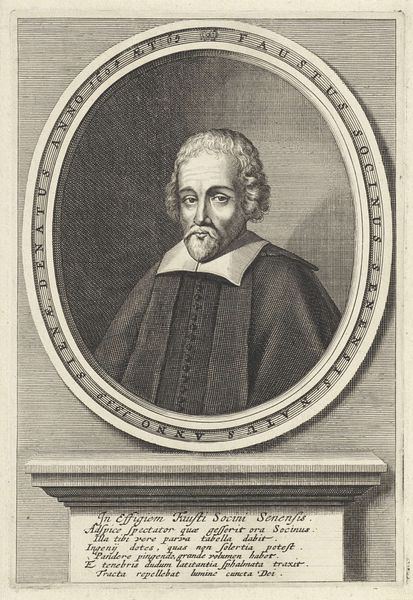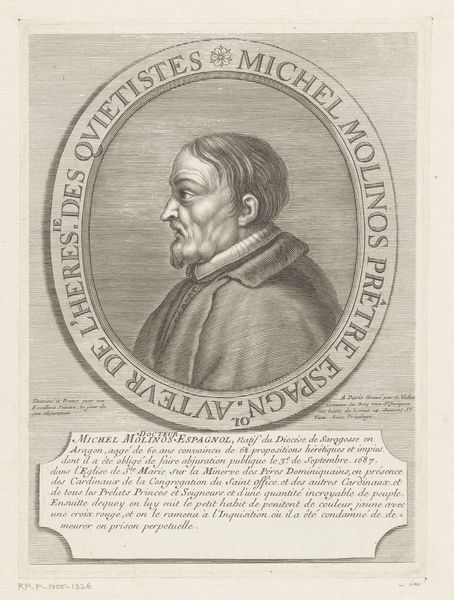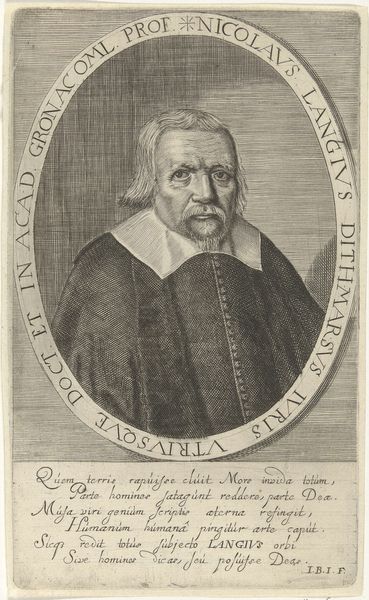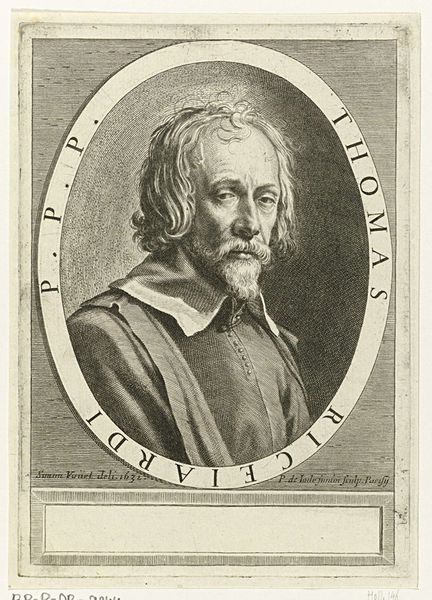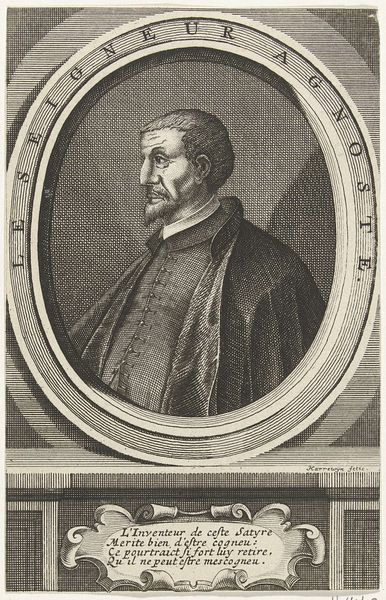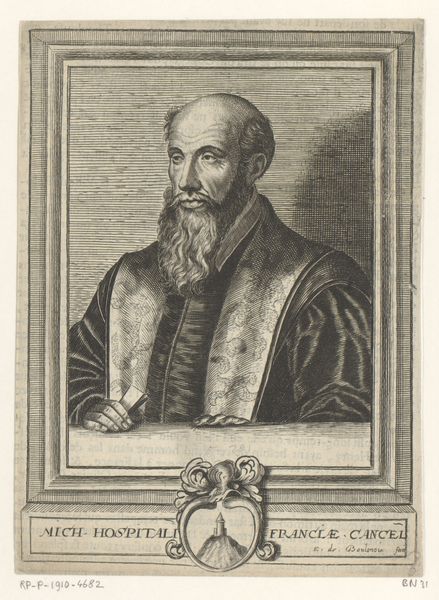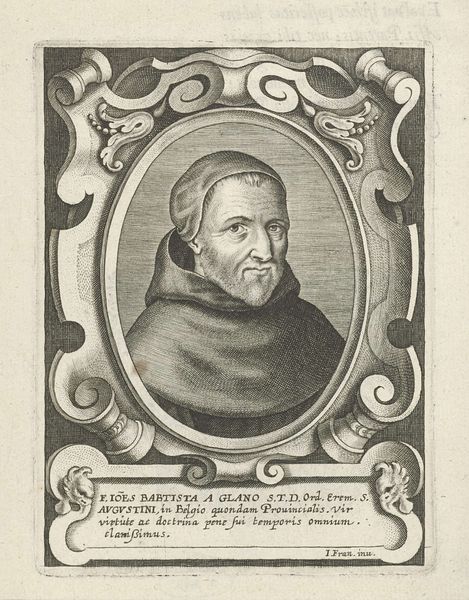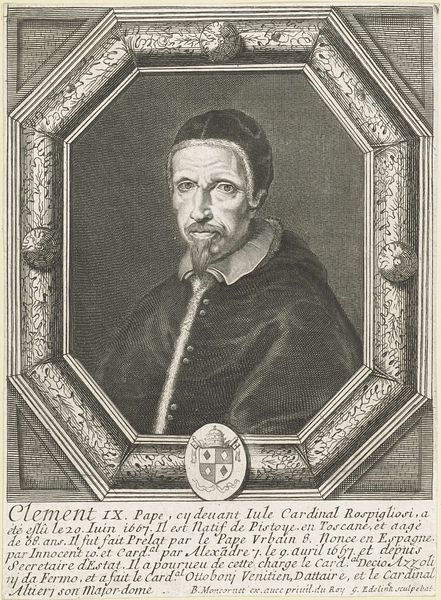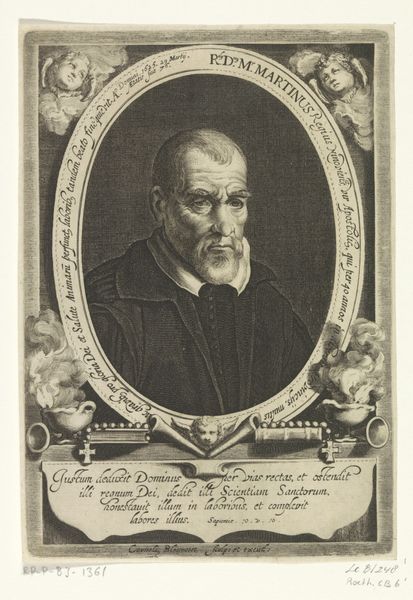
print, engraving
#
portrait
#
baroque
# print
#
old engraving style
#
portrait drawing
#
academic-art
#
engraving
Dimensions: height 262 mm, width 193 mm
Copyright: Rijks Museum: Open Domain
Editor: This is "Portret van Gijsbert Voet" by Abraham Dircksz. Santvoort, made in 1657. It’s an engraving. The subject seems intense, a serious scholar surrounded by text. How do we interpret this image within its historical context? Curator: This portrait exists not just as an individual likeness but as a carefully constructed public image. Consider Voet's prominence: he was a leading theologian, and this print circulated within academic and religious circles. It reinforced his authority. Editor: So it was about more than just capturing his appearance? Curator: Precisely. Look at the text framing the portrait. It’s not merely decorative; it identifies him by age and professorship. The Latin text below, and attributed to Anna Maria van Schurman, amplifies his virtues. Consider how such details promote specific messages to its intended audiences. It's about manufacturing a specific kind of scholarly persona. Editor: The choice of engraving also seems important. It implies precision and intellectual rigor. Curator: Exactly! Printmaking facilitated the widespread distribution of these idealized images. These engravings solidified Voet's legacy. And it propagated certain values. Editor: It's fascinating to consider how images like these were tools for shaping public perception and reinforcing institutional power. It certainly gives me a different way of thinking about portraiture of that era. Curator: Indeed. It’s a reminder that art always functions within specific social, political, and institutional frameworks. This piece shows how image-making contributes to maintaining certain power structures and beliefs.
Comments
No comments
Be the first to comment and join the conversation on the ultimate creative platform.
